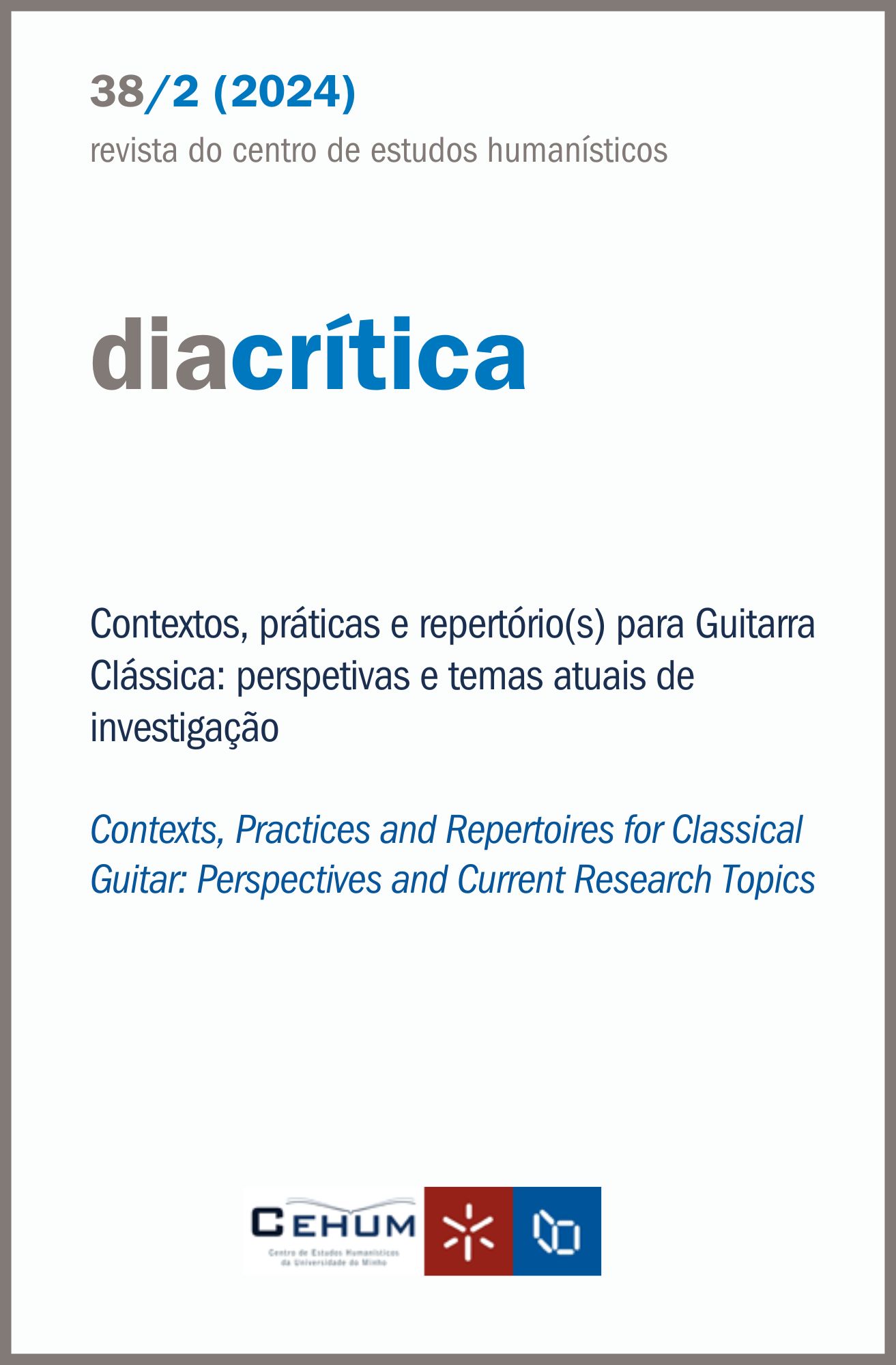Ressonâncias indizíveis. O vazio em "Uma menina está perdida no seu século à procura do pai"
DOI:
https://doi.org/10.21814/diacritica.5253Palavras-chave:
Vazio, Indizível, Uma Menina Está Perdida no seu Século à Procura do Pai, Gonçalo M. Tavares, Literatura portuguesaResumo
Procura-se demonstrar neste estudo que há formas de silêncio e de vazio presentes em Uma Menina Está Perdida no seu Século à Procura do Pai, de Gonçalo M. Tavares, que podem ‘solucionar’ a crise da palavra e dizer o indizível. Para a consecução deste estudo, elege-se o encontro de Marius com Moebius e, a partir da leitura e análise dessa passagem, inicia-se um diálogo com as teorizações de Lauro José Siqueira Baldini (2017), Santiago Kovadloff (2003, 2014), David Le Breton (1999, 2013), Renato Lessa (2014), e George Steiner (1988), entre outros autores, para tentar compreender como o vazio nesse romance possibilita dizer o indizível.
Referências
Agamben, G. (2008). O que resta de Auschwitz: O arquivo e a testemunha (S. J. Assmann, Trad.). Boitempo.
Aguiar e Silva, V. (2007). Teoria da literatura. Almedina.
Amtsblatt des Kontrollrats in Deutschland S 184. (2004, maio 7 – junho 7). Kontrollratsdirektive Nr. 38. https://www.verfassungen.de/de45-49/kr-direktive38.htm
Baldini, L. (2017). O que se pode dizer do indizível? In B. Mariani, C. B. Moreira, J. P. Dias, & M. Beck (Eds.), Indizível, imperceptível e ininteligível: O sujeito contemporâneo e seus arquivos (1.ª ed., pp. 71–82). Eduff.
Eiras, P. (2015). Recensão crítica a Uma Menina Está Perdida no Seu Século à Procura do Pai, de Gonçalo M. Tavares. Colóquio/Letras, 189, 243–245. https://xdata.bookmarc.pt/gulbenkian/cl/pdfs/189/PT.FCG.RCL.9858.pdf
Kovadloff, S. (2003). O silêncio primordial (E. Nepomuceno, Trad.). José Olympio.
Kovadloff, S. (2014). La torre inconclusa. In S. Kovadloff (Ed.), El enigma del sufrimiento (pp. 41–64). Emecé.
Le Breton, D. (1999). Do silêncio (L. M. Couceiro Feio, Trad.). Instituto Piaget.
Le Breton, D. (2013). Antropologia da dor (I. D. Poletti, Trad.). Fap-Unifesp.
Lessa, R. (2014). O silêncio e sua representação. In A. Novaes (Ed.), O silêncio e a prosa do mundo (1.ª ed., pp. 295-312). Edições Sesc São Paulo.
Levi, P. (1988). É isto um homem? (L. Del Re, Trad.). Editora Rocco.
Levi, P. (2004). Os afogados e os sobreviventes (L. S. Henriques, Trad.). Paz e Terra.
Mourão, L. (2020). Entre um e um e a multidão: Ligações éticas em Gonçalo M. Tavares. In L. Jacoto (Ed.), Um senhor Tavares: Ensaios e erros (1.ª ed., pp. 137–158). Imprensa da Universidade de Coimbra.
Nestrovski, A., & Seligman-Silva, M. (2000). Catástrofe e representação (1.ª ed.). Escuta.
Rosenfeld, H. K. (1998). Palavra pescando não-palavra: A metáfora na interpretação psicanalítica. Casa do Psicólogo.
Sciacca, M. F. (1967). Silêncio e palavra (F. L. Chaves & M. T. Pasquini, Trads.). UFRGS.
Sena-Lino, P. (2002). A literatura deve falar sobre o que nos é muito escuro [entrevista a Gonçalo M. Tavares]. Público. https://www.publico.pt/2002/09/07/jornal/a-literatura-deve-falar-sobre-o-que-nos-e-muito-escuro-174232
Steiner, G. (1988). Silêncio e linguagem: Ensaios sobre a crise da palavra (G. Stuart & F. Rajabally, Trads.). Companhia das Letras.
Tavares, G. M. (2005). 1. Bertrand Brasil.
Tavares, G. M. (2013). Atlas do corpo e da imaginação: Teoria, fragmentos e imagens. Editorial Caminho.
Tavares, G. M. (2015). Uma menina está perdida no seu século à procura do pai. Companhia das Letras.
Tavares, G. M. (2018). Breves notas sobre a literatura-Bloom: Dicionário literário. Relógio D’água Editores.
Downloads
Publicado
Como Citar
Edição
Secção
Licença
Direitos de Autor (c) 2024 Ibrahim Alisson Yamakawa

Este trabalho encontra-se publicado com a Creative Commons Atribuição-NãoComercial 4.0.










